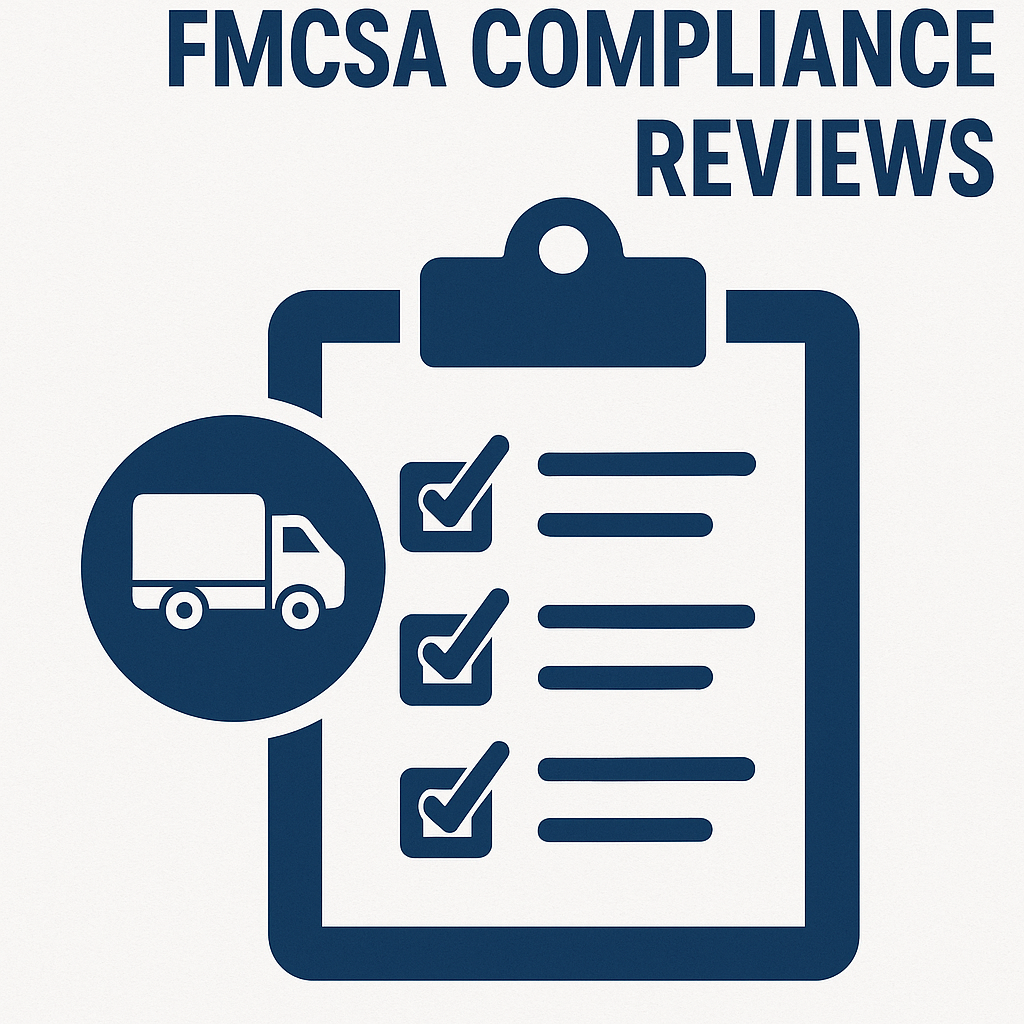🚨 FMCSA Audits: What You Need to Know
If a motor carrier is contacted by the Federal Motor Carrier Safety Administration (FMCSA) or a state enforcement division about an audit or intervention, it’s often due to their Compliance, Safety, and Accountability (CSA) scores crossing a critical threshold. CSA scores are the most common trigger—but not the only one.
Due to limited FMCSA enforcement officers, the agency frequently partners with state enforcement agencies to conduct reviews.
🔍 Common Reasons for FMCSA Audits or Interventions:
-
New entrant to the industry
-
Follow-up after a conditional or unsatisfactory safety rating
-
Involvement in a high-profile fatal accident or hazardous materials spill
-
Carrier-requested audits
-
Formal complaints submitted to FMCSA regarding non-compliance
🕒 How Much Advance Notice is Given?
Typically, carriers are notified two weeks in advance via written letter. However, in more serious cases, inspectors may arrive unannounced.
✅ What to Expect When Inspectors Arrive:
-
Ask for identification (required for all federal/state employees).
-
Be respectful and professional—host in a quiet, distraction-free space.
-
Offer water, coffee, or soda—but never offer meals or gratuities.
-
Clarify your preferred communication method (text, phone, etc.).
📁 Be Ready to Provide:
Inspectors come with data from your CSA profile. Be prepared to provide documentation for:
-
Proof of financial responsibility (MCS-90 for for-hire carriers)
-
Driver qualification and training files
-
Drug and alcohol policy/testing records (for CDL drivers)
-
Hours of Service logs and supporting documentation
-
Vehicle maintenance and inspection records (including tech certifications)
-
Hazmat documentation, if applicable
-
Accident register and reports
-
Medical certifications for drivers
👥 Best Practices During a Review:
Stay calm, be honest, and respond promptly. A well-organized safety and compliance program makes a big difference.
🚛 Do We Have Enough Truck Drivers?
The American Trucking Associations (ATA) estimates a shortage of 60,000 drivers, expected to reach 82,000 by year-end. The primary factors? An aging workforce and declining interest from younger generations.
The average truck driver age is 46, notably higher than most industries. The ATA projects the industry will need to hire 1.2 million new drivers over the next decade, nearly half to replace retirees.
📊 Key Stats:
-
Drivers aged 55+ have grown by 19% in the past 25 years—now totaling ~616,000
-
33% of new hires are needed due to industry growth
-
No maximum age limit for CDL drivers, but all must pass a valid medical exam per CFR 391 standards
🚦 Ensuring Driver Safety in an Aging Workforce
Transportation managers play a vital role in assessing and supporting all drivers—regardless of age.
Best Practices:
-
Develop non-biased safety and loss control policies
-
Use FMCSA-registered medical examiners familiar with your operation
-
Write job descriptions based on actual driver duties
-
Require annual defensive driving training
-
Conduct structured check rides annually
-
Maintain regular communication with drivers
-
Consistently observe and document driving behavior
🚴 May is National Bicycle Safety Month
Biking is a healthy and sustainable way to travel—but it comes with risks. May is National Bicycle Safety Month, and the NHTSA encourages both drivers and cyclists to share the road responsibly.
🚨 2022 Bicycle Safety Stats:
-
1,105 bicyclist fatalities
-
46,195 estimated injuries
Whether you're behind the wheel or on two wheels:
-
Drivers: Stay alert and give space
-
Cyclists: Wear helmets and obey traffic laws
Thanks for promoting safer roads—this month and year-round!
🛠 International Roadcheck 2025: May 13–15
The Commercial Vehicle Safety Alliance’s (CVSA) International Roadcheck is set for May 13–15, 2025. This 72-hour inspection blitz spans Canada, Mexico, and the United States.
CVSA-certified officers will inspect vehicles and drivers at weigh stations, inspection sites, and through mobile patrols to ensure regulatory compliance. The data collected will be released later this summer.
🔎 2025 Focus Areas:
-
Tractor protection systems
-
Alcohol and controlled substance possession
With the number of prohibited drivers listed in the U.S. Drug and Alcohol Clearinghouse (DACH) continuing to rise, substance misuse remains a serious threat.
What to Expect:
Inspections will follow the North American Standard Level I Inspection, a 37-step process that includes a thorough review of:
-
Vehicle components
-
Driver documentation
-
Regulatory requirements










